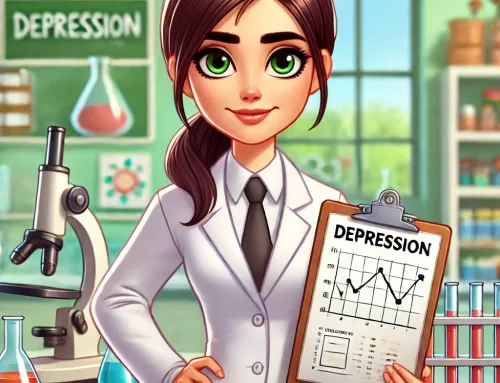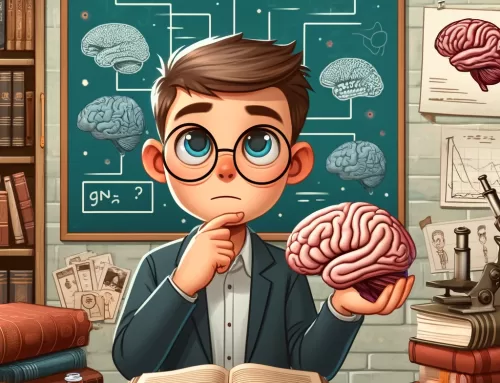Almost a year after the APA issued its health advisory on social media use in adolescence, society continues to wrestle with ways to maximize the benefits of these platforms while protecting youth from the potential harms associated with them.1
By early 2024, few meaningful changes to social media platforms had been enacted by industry, and no federal policies had been adopted. There remains a need for social media companies to make fundamental changes to their platforms.
Psychological science continues to reveal benefits from social media use, as well as risks and opportunities that certain content, features, and functions present to young social media users. The science discussed below highlights the need to enact new, responsible safety standards to mitigate harm.2
Elaboration of science on social media content, features, and functions
Platforms built for adults are not inherently suitable for youth.i Youth require special protection due to areas of competence or vulnerability as they progress through the childhood, teenage, and late adolescent years.ii This is especially true for youth experiencing psychological, physical, intellectual, mental health, or other developmental challenges; chronological age is not directly associated with social media readiness.iii
Hypersensitivity to social feedback
Brain development starting at ages 10–13 (i.e., the outset of puberty) until approximately the mid-twenties is linked with hypersensitivity to social feedback/stimuli.iv In other words, youth become especially invested in behaviors that will help them get personalized feedback, praise, or attention from peers.
- AI-recommended content has the potential to be especially influential and hard to resist within this age range.v It is critical that AI-recommended content be designed to prioritize youth safety and welfare over engagement. This suggests potentially restricting the use of personalized recommendations using youth data, design features that may prioritize content evoking extreme emotions, or content that may depict illegal or harmful behavior.
- Likes and follower counts activate neural regions that trigger repetitive behavior, and thus may exert greater influence on youths’ attitudes and behavior than among adults.vi Youth are especially sensitive to both positive social feedback and rejection from others. Using these metrics to maintain platform engagement capitalizes on youths’ vulnerabilities and likely leads to problematic use.
- The use of youth data for tailored ad content similarly is influential for youth who are biologically predisposed toward peer influence at this stage and sensitive to personalized content.vii
Need for relationship skill building
Adolescence is a critical period for the development of more complex relationship skills, characterized by the ability to form emotionally intimate relationships.viii The adolescent years should provide opportunities to practice these skills through one-on-one or small group interactions.
- The focus on metrics of followers, likes, and views focuses adolescents’ attention on unilateral, depersonalized interactions and may discourage them from building healthier and psychologically beneficial relationship skills.ix
Susceptibility to harmful content
Adolescence is a period of heightened susceptibility to peer influence, impressionability, and sensitivity to social rejection.x Harmful content, including cyberhate, the depiction of illegal behavior, and encouragement to engage in self-harm (e.g., cutting or eating-disordered behavior) is associated with increased mental health difficulties among both the targets and witnesses of such content.xi
- The absence of clear and transparent processes for addressing reports of harmful content makes it harder for youth to feel protected or able to get help in the face of harmful content.
Underdeveloped impulse control
Youths’ developing cortical system (particularly in the brain’s inhibitory control network) makes them less capable of resisting impulses or stopping themselves from behavior that may lead to temporary benefit despite negative longer-term consequences.xii This can lead to adolescents making decisions based on short-term gain, lower appreciation of long-term risks, and interference with focus on tasks that require concentration.
- Infinite scroll is particularly risky for youth since their ability to monitor and stop engagement on social media is more limited than among adults.xiii This contributes to youths’ difficulty disengaging from social media and may contribute to high rates of youth reporting symptoms of clinical dependency on social media.xiv
- The lack of time limits on social media use similarly is challenging for youth, particularly during the school day or at times when they should be doing homework.xv
- Push notifications capitalize on youths’ sensitivity to distraction. Task-shifting is a higher order cognitive ability not fully developed until early adulthood and may interfere with youths’ focus during class time and when they should be doing homework.xvi
- The use and retention of youths’ data without appropriate parental consent, and/or child assent in developmentally appropriate language, capitalizes on youths’ relatively poor appreciation for long-term consequences of their actions, permanence of online content, or their ability to weigh the risks of their engagement on social media.xvii
Reliance on sleep for healthy brain development
Other than the first year of life, puberty is the most important period of brain growth and reorganization in our lifetimes.xviii Sleep is essential for healthy brain development and mental health in adolescence.xix Sleep delay or disruptions have significant negative effects on youths’ attention, behavior, mood, safety, and academic performance.
- A lack of limits on the time of day when youth can use social media has been cited as the predominant reason why adolescents are getting less than the recommended amount of sleep, with significant implications for brain and mental health.xx
Vulnerability to malicious actors
Youth are easily deceived by predators and other malicious actors who may attempt to interact with them on social media channels.xxi
- Connection and direct messaging with adult strangers places youth at risk of identity theft and potentially dangerous interactions, including sexploitation.
Need for parental/caregiver partnership
Research indicates that youth benefit from parental support to guide them toward safe decisions and to help them understand and appropriately respond to complex social interactions.xxii Granting parents oversight of youths’ accounts should be offered in balance with adolescents’ needs for autonomy, privacy, and independence. However, it should be easier for parents to partner with youth online in a manner that fits their family’s needs.
- The absence of transparent and easy-to-use parental/caregiver tools increases parents’ or guardians’ difficulty in supporting youths’ experience on social media.xxiii
A path forward based on science
Change is needed soon. Solutions should reflect a greater understanding of the science in at least three ways.
First, youth vary considerably in how they use social media. Some uses may promote healthy development and others may create harm. As noted in the APA health advisory, using social media is not inherently beneficial or harmful to young people. The effects of social media depend not only on what teens can do and see online, but teens’ pre-existing strengths or vulnerabilities, and the contexts in which they grow up.
Second, science has highlighted biological and psychological abilities/vulnerabilities that interact with the content, functions, and features built into social media platforms, and it is these aspects of youths’ social media experience that must be addressed to attenuate risks.xxiv Social media use, functionality, and permissions/consenting should be tailored to youths’ developmental capabilities. Design features created for adults may not be appropriate for children.
Third, youth are adept at working around age restrictions. Substantial data reveal a remarkable number of children aged 12 years and younger routinely using social media, indicating that current policies and practices to restrict use to older youth are not working.xxv
Policies will not protect youth unless technology companies are required to reduce the risks embedded within the platforms themselves.
As policymakers at every level assess their approach to this complex issue, it is important to note the limitations of frequently proposed policies, which are often misreported and fall far short of comprehensive safety solutions that will achieve meaningful change.
Restricting downloads
Restricting application downloads at the device level does not fully restrict youths’ access and will not meaningfully improve the safety of social media platforms. Allowing platforms to delegate responsibility to app stores does not address the vulnerabilities and harms built into the platforms.
Requiring age restrictions
Focusing only on age restrictions does not improve the platforms or address the biological and psychological vulnerabilities that persist past age 18. While age restriction proposals could offer some benefits if effectively and equitably implemented, they do not represent comprehensive improvements to social media platforms, for at least four reasons:
- Creating a bright line age limit ignores individual differences in adolescents’ maturity and competency
- These proposals fail to mitigate the harms for those above the age limit and can lead to a perception that social media is safe for adolescents above the threshold age, though neurological changes continue until age 25
- Completely limiting access to social media may disadvantage those who are experiencing psychological benefits from social media platforms, such as community support and access to science-based resources, which particularly impact those in marginalized populations
- The process of age-verification requires more thoughtful consideration to ensure that the storage of official identification documents does not systematically exclude subsets of youth, create risks for leaks, or circumvent the ability of young people to maintain anonymity on social platforms.
Use of parental controls
Granting parents and caregivers greater access to their children’s social media accounts will not address risks embedded within platforms themselves. More robust and easy-to-use parental controls would help some younger age groups, but as a sole strategy, this approach ignores the complexities of adolescent development, the importance of childhood autonomy and privacy, and disparities in time or resources available for monitoring across communities.xxvi
[Related: Keeping teens safe on social media: What parents should know to protect their kids]
Some parents might be technologically ill-equipped, lack the time or documentation to complete requirements, or simply be unavailable to complete these requirements. Disenfranchising some young people from these platforms creates inequities.xxvii
1 These recommendations enact policies and resolutions approved by the APA Council of Representatives including the APA Resolution on Child and Adolescent Mental and Behavioral Health and the APA Resolution on Dismantling Systemic Racism in contexts including social media. These are not professional practice guidelines but are intended to provide information based on psychological science.
2 This report seeks to elaborate on extant psychological science findings, which may be particularly relevant in the creation of policy solutions that protect young people, and to inform the development of social media safety standards.
Recommendations from APA’s health advisory on social media use in adolescence
- Youth using social media should be encouraged to use functions that create opportunities for social support, online companionship, and emotional intimacy that can promote healthy socialization.
- Social media use, functionality, and permissions/consenting should be tailored to youths’ developmental capabilities; designs created for adults may not be appropriate for children.
- In early adolescence (i.e., typically 10–14 years), adult monitoring (i.e., ongoing review, discussion, and coaching around social media content) is advised for most youths’ social media use; autonomy may increase gradually as kids age and if they gain digital literacy skills. However, monitoring should be balanced with youths’ appropriate needs for privacy.
- To reduce the risks of psychological harm, adolescents’ exposure to content on social media that depicts illegal or psychologically maladaptive behavior, including content that instructs or encourages youth to engage in health-risk behaviors, such as self-harm (e.g., cutting, suicide), harm to others, or those that encourage eating-disordered behavior (e.g., restrictive eating, purging, excessive exercise) should be minimized, reported, and removed; moreover, technology should not drive users to this content.
- To minimize psychological harm, adolescents’ exposure to “cyberhate” including online discrimination, prejudice, hate, or cyberbullying especially directed toward a marginalized group (e.g., racial, ethnic, gender, sexual, religious, ability status), or toward an individual because of their identity or allyship with a marginalized group should be minimized.
- Adolescents should be routinely screened for signs of “problematic social media use” that can impair their ability to engage in daily roles and routines, and may present risk for more serious psychological harms over time.
- The use of social media should be limited so as to not interfere with adolescents’ sleep and physical activity.
- Adolescents should limit use of social media for social comparison, particularly around beauty- or appearance-related content.
- Adolescents’ social media use should be preceded by training in social media literacy to ensure that users have developed psychologically-informed competencies and skills that will maximize the chances for balanced, safe, and meaningful social media use.
- Substantial resources should be provided for continued scientific examination of the positive and negative effects of social media on adolescent development.
Acknowledgments – Expert advisory panel
Co-chairs
Mary Ann McCabe, PhD, ABPP, member-at-large, Board of Directors, American Psychological Association; associate clinical professor of pediatrics, The George Washington University School of Medicine and Health Sciences
Mitchell J. Prinstein, PhD, ABPP, chief science officer, American Psychological Association; John Van Seters Distinguished Professor of Psychology and Neuroscience, University of North Carolina at Chapel Hill
Members
Mary K. Alvord, PhD, founder, Alvord, Baker & Associates; board president, Resilience Across Borders; adjunct associate professor of psychiatry and behavioral sciences, The George Washington University School of Medicine and Health Sciences
Dawn T. Bounds, PhD, PMHNP-BC, FAAN, assistant professor, Sue & Bill Gross School of Nursing, University of California, Irvine
Linda Charmaraman, PhD, senior research scientist, Wellesley Centers for Women, Wellesley College
Sophia Choukas-Bradley, PhD, assistant professor, Department of Psychology, University of Pittsburgh
Dorothy L. Espelage, PhD, William C. Friday Distinguished Professor of Education, University of North Carolina at Chapel Hill
Joshua A. Goodman, PhD, assistant professor, Department of Psychology, Southern Oregon University
Jessica L. Hamilton, PhD, assistant professor, Department of Psychology, Rutgers University
Brendesha M. Tynes, PhD, Dean’s Professor of Educational Equity, University of Southern California
L. Monique Ward, PhD, professor, Department of Psychology (Developmental), University of Michigan
Lucía Magis-Weinberg, MD, PhD, assistant professor, Department of Psychology, University of Washington
Selected references
i Maza, M. T., Fox, K. A., Kwon, S. J., Flannery, J. E., Lindquist, K. A., Prinstein, M. J., & Telzer, E. H. (2023). Association of habitual checking behaviors on social media with longitudinal functional brain development. JAMA Pediatrics, 177(2), 160–167; Prinstein, M. J., Nesi, J., & Telzer, E. H. (2020). Commentary: An updated agenda for the study of digital media use and adolescent development—Future directions following Odgers & Jensen (2020). Journal of Child Psychology and Psychiatry, 61(3), 349–352. https://doi.org/10.1111/jcpp.13219
ii Nesi, J., Choukas-Bradley, S., & Prinstein, M. J. (2018). Transformation of adolescent peer relations in the social media context: Part 1—A theoretical framework and application to dyadic peer relationships. Clinical Child and Family Psychology Review, 21(3), 267–294. https://doi.org/10.1007/s10567-018-0261-x
iii Valkenburg, P. M., & Peter, J. (2013). The differential susceptibility to media effects model. Journal of Communication, 63(2), 221–243. https://doi.org/10.1111/jcom.12024
iv Fareri, D. S., Martin, L. N., & Delgado, M. R. (2008). Reward-related processing in the human brain: Developmental considerations. Development and Psychopathology, 20(4), 1191–1211; Somerville, L. H., & Casey, B. J. (2010). Developmental neurobiology of cognitive control and motivational systems. Current Opinion in Neurobiology, 20(2), 236–241. https://doi.org/10.1016/j.conb.2010.01.006
v Shin, D. (2020). How do users interact with algorithm recommender systems? The interaction of users, algorithms, and performance. Computers in Human Behavior, 109, 106344. https://doi.org/10.1016/j.chb.2020.106344
vi Sherman, L. E., Payton, A. A., Hernandez, L. M., Greenfield, P. M., & Dapretto, M. (2016). The power of the Like in adolescence: Effects of peer influence on neural and behavioral responses to social media. Psychological Science, 27(7), 1027–1035. https://doi.org/10.1177/0956797616645673
vii Albert, D., Chein, J., & Steinberg, L. (2013). The teenage brain: Peer influences on adolescent decision making. Current Directions in Psychological Science, 22(2), 114–120. https://doi.org/10.1177/0963721412471347
viii Armstrong-Carter, E., & Telzer, E. H. (2021). Advancing measurement and research on youths’ prosocial behavior in the digital age. Child Development Perspectives, 15(1), 31–36. https://doi.org/10.1111/cdep.12396; Newcomb, A. F., & Bagwell, C. L. (1995). Children’s friendship relations: A meta-analytic review. Psychological Bulletin, 117(2), 306.
ix Nesi, J., & Prinstein, M. J. (2019). In search of likes: Longitudinal associations between adolescents’ digital status seeking and health-risk behaviors. Journal of Clinical Child & Adolescent Psychology, 48(5), 740–748. https://doi.org/10.1080/15374416.2018.1437733; Rotondi, V., Stanca, L., & Tomasuolo, M. (2017). Connecting alone: Smartphone use, quality of social interactions and well-being. Journal of Economic Psychology, 63, 17–26. https://doi.org/10.1016/j.joep.2017.09.001
x Sherman, L. E., Payton, A. A., Hernandez, L. M., Greenfield, P. M., & Dapretto, M. (2016). The power of the Like in adolescence: Effects of peer influence on neural and behavioral responses to social media. Psychological Science, 27(7), 1027–1035. https://doi.org/10.1177/0956797616645673
xi Susi, K., Glover-Ford, F., Stewart, A., Knowles Bevis, R., & Hawton, K. (2023). Research review: Viewing self-harm images on the internet and social media platforms: Systematic review of the impact and associated psychological mechanisms. Journal of Child Psychology and Psychiatry, 64(8), 1115–1139.
xii Hartley, C. A., & Somerville, L. H. (2015). The neuroscience of adolescent decision-making. Current Opinion in Behavioral Sciences, 5, 108–115. https://doi.org/10.1016/j.cobeha.2015.09.004
xiii Atherton, O. E., Lawson, K. M., & Robins, R. W. (2020). The development of effortful control from late childhood to young adulthood. Journal of Personality and Social Psychology, 119(2), 417–456. https://doi.org/10.1037/pspp0000283
xiv Boer, M., Stevens, G. W., Finkenauer, C., & Van den Eijnden, R. J. (2022). The course of problematic social media use in young adolescents: A latent class growth analysis. Child Development, 93(2), e168–e187.
xv Hall, A. C. G., Lineweaver, T. T., Hogan, E. E., & O’Brien, S. W. (2020). On or off task: The negative influence of laptops on neighboring students’ learning depends on how they are used. Computers & Education, 153, 103901. https://doi.org/10.1016/j.compedu.2020.103901; Sana, F., Weston, T., & Cepeda, N. J. (2013). Laptop multitasking hinders classroom learning for both users and nearby peers. Computers & Education, 62, 24–31. https://doi.org/10.1016/j.compedu.2012.10.003
xvi von Bastian, C. C., & Druey, M. D. (2017). Shifting between mental sets: An individual differences approach to commonalities and differences of task switching components. Journal of Experimental Psychology: General, 146(9), 1266–1285. https://doi.org/10.1037/xge0000333
xvii Andrews, J. C., Walker, K. L., & Kees, J. (2020). Children and online privacy protection: Empowerment from cognitive defense strategies. Journal of Public Policy & Marketing, 39(2), 205–219. https://doi.org/10.1177/0743915619883638; Romer D. (2010). Adolescent risk taking, impulsivity, and brain development: Implications for prevention. Developmental Psychobiology, 52(3), 263–276. https://doi.org/10.1002/dev.20442
xviii Orben, A., Przybylski, A. K., Blakemore, S.-J., Kievit, R. A. (2022). Windows of developmental sensitivity to social media. Nature Communications, 13(1649). https://doi.org/10.1038/s41467-022-29296-3
xix Paruthi, S., Brooks, L. J., D’Ambrosio, C., Hall, W. A., Kotagal, S., Lloyd, R. M., Malow, B. A., Maski, K., Nichols, C., Quan, S. F., Rosen, C. L., Troester, M. M., & Wise, M. S. (2016). Recommended amount of sleep for pediatric populations: A consensus statement of the American Academy of Sleep Medicine. Journal of Clinical Sleep Medicine, 12(6), 785–786. https://doi.org/10.5664/jcsm.5866
xx Perrault, A. A., Bayer, L., Peuvrier, M., Afyouni, A., Ghisletta, P., Brockmann, C., Spiridon, M., Hulo Vesely, S., Haller, D. M., Pichon, S., Perrig, S., Schwartz, S., & Sterpenich, V. (2019). Reducing the use of screen electronic devices in the evening is associated with improved sleep and daytime vigilance in adolescents. Sleep, 42(9), zsz125. https://doi.org/10.1093/sleep/zsz125; Telzer, E. H., Goldenberg, D., Fuligni, A. J., Lieberman, M. D., & Gálvan, A. (2015). Sleep variability in adolescence is associated with altered brain development. Developmental Cognitive Neuroscience, 14, 16–22. https://doi.org/10.1016/j.dcn.2015.05.007
xxi Livingstone, S., & Smith, P. K. (2014). Annual research review: Harms experienced by child users of online and mobile technologies: The nature, prevalence and management of sexual and aggressive risks in the digital age. Journal of Child Psychology and Psychiatry, 55(6), 635–654. https://doi.org/10.1111/jcpp.12197; Wolak, J., Finkelhor, D., Mitchell, K. J., & Ybarra, M. L. (2008). Online “predators” and their victims: Myths, realities, and implications for prevention and treatment. American Psychologist, 63(2), 111–128. https://doi.org/10.1037/0003-066X.63.2.111
xxii Wachs, S., Costello, M., Wright, M. F., Flora, K., Daskalou, V., Maziridou, E., Kwon, Y., Na, E.-Y., Sittichai, R., Biswal, R., Singh, R., Almendros, C., Gámez-Guadix, M., Görzig, A., & Hong, J. S. (2021). “DNT LET ’EM H8 U!”: Applying the routine activity framework to understand cyberhate victimization among adolescents across eight countries. Computers & Education, 160, Article 104026. https://doi.org/10.1016/j.compedu.2020.104026; Padilla-Walker, L. M., Stockdale, L. A., & McLean, R. D. (2020). Associations between parental media monitoring, media use, and internalizing symptoms during adolescence. Psychology of Popular Media, 9(4), 481. https://doi.org/10.1037/ppm0000256
xxiii Dietvorst, E., Hiemstra, M., Hillegers, M. H. J., & Keijsers, L. (2018). Adolescent perceptions of parental privacy invasion and adolescent secrecy: An illustration of Simpson’s paradox. Child Development, 89(6), 2081–2090. https://doi.org/10.1111/cdev.13002; Auxier, B. (2020, July 28). Parenting Children in the Age of Screens. Pew Research Center: Internet, Science & Tech; Pew Research Center. https://www.pewresearch.org/internet/2020/07/28/parenting-children-in-the-age-of-screens/
xxiv National Academies of Sciences, Engineering, and Medicine. (2024). Social media and adolescent health. The National Academies Press. https://doi.org/10.17226/27396
xxv Charmaraman, L., Lynch, A. D., Richer, A. M., & Zhai, E. (2022). Examining early adolescent positive and negative social technology behaviors and well-being during the COVID-19 pandemic. Technology, Mind, and Behavior, 3(1), Feb 17 2022. https://doi.org/10.1037/tmb0000062
xxvi Dietvorst, E., Hiemstra, M., Hillegers, M.H.J., & Keijsers, L. (2018). Adolescent perceptions of parental privacy invasion and adolescent secrecy: An illustration of Simpson’s paradox. Child Development, 89(6), 2081–2090. https://doi.org/10.1111/cdev.13002
xxvii Charmaraman, L., Lynch, A. D., Richer, A. M., & Zhai, E. (2022). Examining early adolescent positive and negative social technology behaviors and well-being during the COVID-19 pandemic. Technology, Mind, and Behavior, 3(1), Feb 17 2022. https://doi.org/10.1037/tmb0000062




